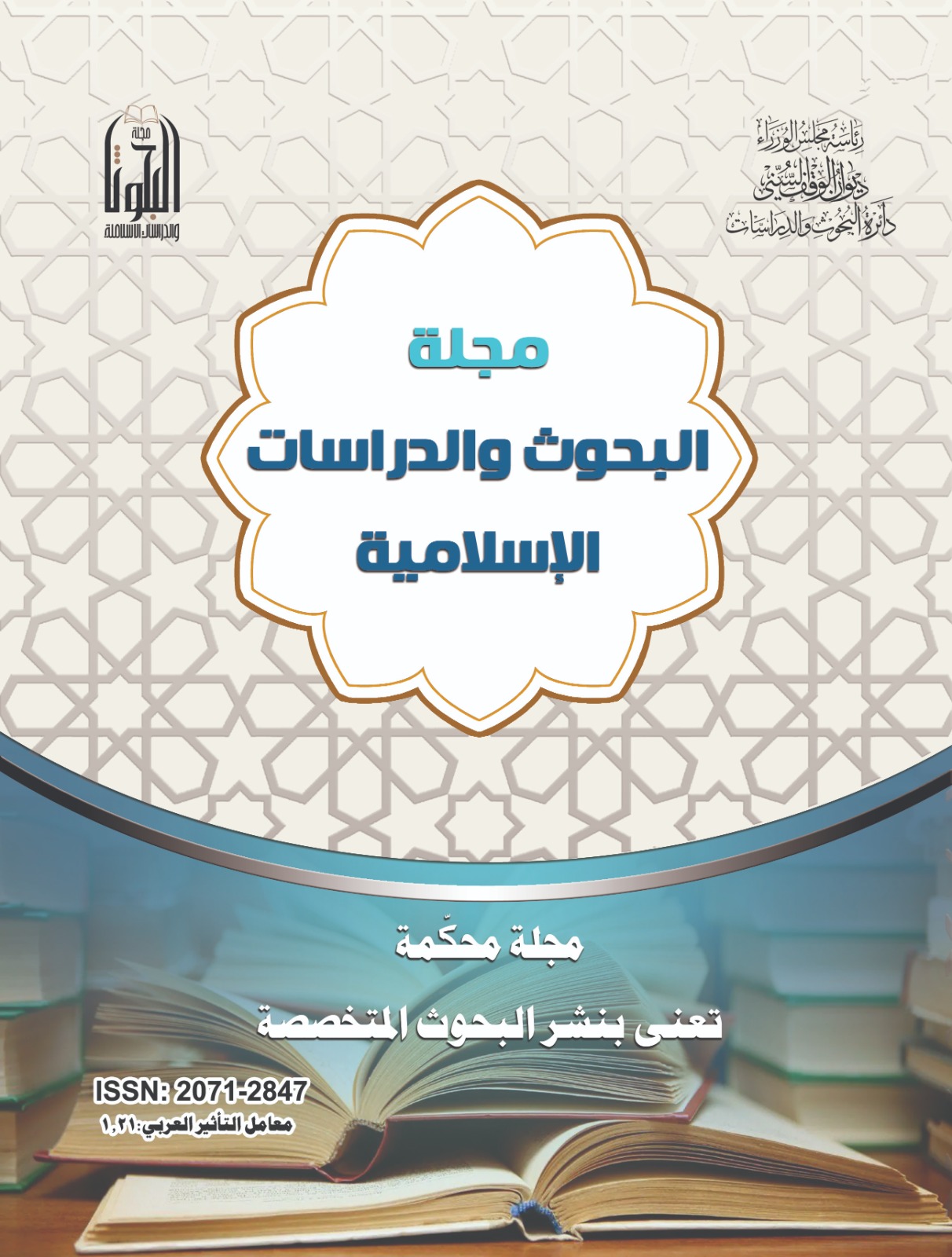Abstract
The researcher addresses the significant role played by the Ash‘ari school in fostering and preserving intellectual and doctrinal unity in the Maghreb countries of North Africa. This phenomenon contrasts with the situation in many regions of the Eastern Islamic world, where sects, groups, doctrines, and schools proliferated, and no intellectual, doctrinal, or political movements managed to eliminate or suppress them. The researcher seeks to study the historical stages of the development of the Ash‘ari school's doctrinal thought in the Maghreb countries of North Africa and how these stages contributed to establishing the intellectual and doctrinal unity that persists to this day. The researcher adopted the historical-analytical methodology to address the subject matter. He identified three main phases through which Ash‘ari doctrinal thought evolved and deeply influenced the intellectual and political structures of North African Islamic society. The first phase began with Al-Qalanisi (d. 359 AH) and ended with Al-Safaqsi (d. 501 AH).The second phase started with Ibn Tumart (d. 524 AH), passed through figures such as Al-Dharir (d. 520 AH) and Ibn Al-Arabi (d. 543 AH), and concluded with Al-Sallaji (d. 574 AH).The final phase was led by Al-Sanusi (d. 895 AH), who produced a wealth of writings. Each of these stages contributed to dissolving doctrinal and intellectual differences among the various cultural and ethnic groups in the region. This success was reflected in the establishment of societal and political peace throughout the Maghreb for several centuries
Abstract
درس الباحث الدور المحوري المهم الذي لعبته المدرسة الأشعرية في بناء وحفظ الوحدة الفكرية والعقدية في بلدان المغرب الإسلامي في شمال إفريقيا وهي من الظواهر الغائبة في بقاع بلدان العالم الإسلامي الشرقية حيث كثرت الفرق والجماعات والمذاهب والمدارس ولم تتمكن كل حركات التغيير الفكرية والعقدية والسياسية من إزاحتها ومحوها؛ يحاول الباحث دراسة المراحل التاريخية لتطور الفكر العقدي للمدرسة الاشعرية في بلدان المغرب الإسلامي في شمال إفريقيا ودور تلك المراحل في التأسيس للوحدة الفكرية والعقدية القائمة لحد الساعة, واعتمد الباحث الدراسة المنهجية التاريخية التحليلية لتناول مادة الموضوع؛ ولقد وقف الباحث على مراحل ثلاثة رئيسيةٍ تطور عبرها الفكر العقدي الأشعري وتغلغل في البنى الفكرية والسياسية للمجتمع الإسلامي الشمال إفريقي، بدأت المرحلة الأولى بالقلانسي (ت/359ه) وانتهت بالسفاقسي(ت/501ه) بينما ابتدأت المرحلة الثانية بابن تومرت(ت/524ه)، مرورا بالضرير(ت/520هـ) وابن العربي(ت/543هـ) وانتهاءً بالسلالجي (ت/574هـ) بينما تربع على المرحلة الأخيرة السنوسي (ت/895هـ) بمؤلفاته الغزيرة وساهمت كل مرحلة من هذه المراحل في إذابة الفروقات العقدية والفكرية بين الأطياف الثقافية والعرقية في بلدان المنطقة وعكست نجاحها الفكري والعقدي في بناء السلم المجتمعي والسياسي في عموم بلدان المغرب العربي في الشمال الإفريقي لقرون عدة.
